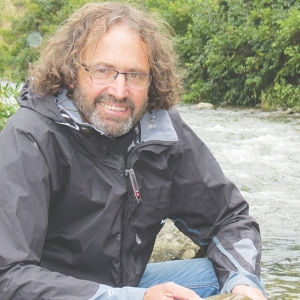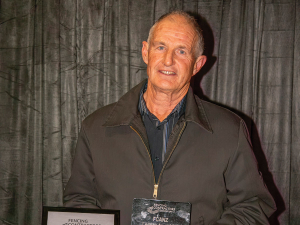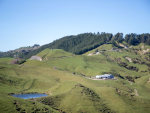So the improvement and stability in waterways so far is just a big lie to Dr Joy. Is he suggesting that organisations like Horizons Regional Council and NIWA are inaccurate with their samplings and trying to hide evidence of pollution? You have to be kidding.
He claims 95% of pollution in the Manawatu River is caused by intensive dairying and 5% by the other negative impacts such as wastewater treatment plants. Let us explore the evidence of this. The Oroua River at AFFCO works had a recent median nitrate loading of 0.245g/m3 and has a Horizons rating of ‘good’. This is after draining an area holding tens of thousands of dairy cows stretching back beyond Apiti and a helluva lot of other livestock and cropping.
The Oroua at the Awahuri bridge had a recent median nitrate loading of 0.699g/m3 and a rating of ‘poor’. This is downstream of the Fielding sewage treatment plant and is presumably where Joy’s nieces got violently ill when swimming. What a surprise!
At the Apiti Gorge bridge, the median nitrate loading is 0.06g/m3 and is rated ‘excellent’. Just downstream of a tributary drain, the Kimbolton sewage treatment plant (STP) has a median of 0.81g/m3 with a high of a 3g/m3. This raises the Oroua to 0.136g/m3.
Many of us will remember when town/city sewage was largely untreated and meatworks such as the Fielding one spewed blood and other dubious material directly into rivers. Many dead sheep were found in waterways in the days when they numbered about 70 million. There was no shortage of long fin eels with this amount of food about – monsters that could pull under and swallow a fledgling duck. Eels struggle for food now.
Millions of dairy cows were milked through sheds, the waste water and effluent going directly into the nearest ditch or waterway. Similarly, dairy farms from the 1930s to the 1960s fed many more millions of pigs, their waste going into nearby ditches and creeks. In most recognised dairying areas, for at least 50 years, cows were stocked at 2.5/ha and better. Also, hill country erosion was worse because of the amount of generated scrub being cleared.
Oxidation ponds, when they came, also discharged into nearby waterways.
In short, it doesn’t pay to get too nostalgic about water quality. There has been a massive improvement in water quality as it appears to people of my generation who did not have blinkers on. But we can do a bit better yet.
Closer to home, the Dec 2013 flow in the Upper Manawatu River at Te Uri Rd was 0.38g/m3 after draining most of the dairy farms in the Norsewood area. The Manawatu River at Weber Rd, immediately east of Dannevirke, had a recent median of 0.47g/m3, rated ‘fair’. The tributary Mangatera, which drains dairying, lifestyle and cropping country north of Dannevirke, has a median of 0.58g/m3 at Dannevirke – rated ‘fair’. Where it joins the Manawatu River immediately after passing the Dannevirke STP it rises to a median of 1.36g/m3.
This has the effect of raising the Manawatu River so that at Hopelands it still has a median of 0.75g/m3. To be fair, on the way down it takes in two tributaries that drain the intensive dairying areas south of Dannevirke: the Tamaki with a median of 0.66g/m3, rated ‘poor’, and the little Kemeti with a median of 0.54g/m3 rated ‘very poor’.
The Mangatoro tributary at the Mangahei Road has a median of 0.61g/m3 and a rating of ‘very poor’. This drains no dairy farms and starts up in the steep limestone slopes of Waewaepa Range, coming down the prime sheep and beef country of the Waitohoro Valley.
About five years ago Fish and Game did a drift dive survey of the upper (above Dannevirke) and middle reaches (Gorge to Dannevirke) of the Manawatu River and gave it a high rating for trout numbers. This was when the Cawthron Institute rated the water sampled at Hopelands as the most oxygen-depleted in the western world. Go figure!
You do not need a PhD in ecology to realise you are not going to get too many native fish where there are trout around. Plenty of bully bully in our little stream, the Makotuku, where size and culverts stop trout (but not eel).
Joy expounds the theory that Fonterra and Dairy NZ are together in a conspiracy to get the environmental vandal, the dairy farmer, off the hook over water quality. Another delusion.
No one is pretending that cows and dairy farms are not potential polluters and that we cannot improve systems to further reduce nitrogen wastage. But let’s not pretend we are saving the country by telling the world that the only way we can save our so-called ‘seriously degraded’ waterways is to stop dairying growth and get the cows off the paddocks. Or by telling the world that our clean green image is a myth.
Some of us have travelled overseas and have seen a lot of waterways and farming systems. Consequently we know that our clean green image is not a myth. It is easier [for urban dwellers and other critics] to pretend, while flushing toilets, taking showers and turning on dishwashers, that they are innocent of pollution and that it’s all the fault of dairy farmers with their methane belching, urine poisoning cows.
• Norm Atkins is a farmer at Makotutu, southern Hawkes Bay.

















